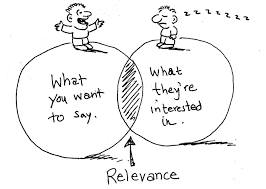Strategic and impactful communication skills are critical to success in almost any career. Business professionals absolutely need these skills, but so do professionals in the technical arena, like architects, engineers, developers, etc… The better you can translate the technical details of your work into impactful, simple business and customer outcomes, the more a business audience can appreciate your contribution. In turn, they are more likely to want to partner with you and support you in your promotion.
This article is inspired by questions from a SSG member – let’s call him “Joe”. See Joe’s questions below on how to communicate strategically and with impact.
I joined Business consulting firm from the IT Services firm 2 years back. I have been told that my communication is not making any impact and this is impacting my career. I usually communicate with clients and internal partners. I have been told that if there are 2 sets of audience – Business and IT, my communication resonate with core IT stakeholders. But doesn’t resonate with business stakeholders. I would like to get coaching in 2 things:
- How to communicate with impact. My background is engineering and I usually get into details . This gives an impression that my communication is not good to create an impact with business and partners in consulting world
- How to think and communicate strategically?
To try to improve, I started reading various strategy magazines like MIT sloan review. I also attended some communication courses. But it is not creating an impact. Hence I would like to have a coach for me to improve my communication and thinking style.
Joe, thanks for reaching out. Here are 5 tips you can use immediately on how to communicate strategically and with impact.
Tip 1: Always start from outside in. When you prep to speak to a business audience, first think about
- What they want to get out of this communication?
- What do they care about and what questions are they trying to have answered via your communication?
If you are not sure, what they want to get out of the conversation, then go ask them before the presentation. They will appreciate your proactiveness. Then prep your communication to address their need directly. Sit down and write down 3-4 questions you think this business audience have and then write down your answers to each. Once you do this, then see how you can weave your answers into your presentation so they are fully covered.
Tip 2: Always answer these three questions for a business audience. If you are not sure how to do number 1 above, don’t worry. Always share the answer to the following questions. Every business person would want to know the following from your communication
- How does your work help the business? Does it increase revenue, save cost?
- How does your work improve the customer experience? How does your work make the life of customers better? This will in turn improve customer loyalty
- How does your work impact each of the business departments in the audience? What do they need to know to do their work better?
By answering directly these questions with your presentation, you will come across strategic and impactful.
Tip 3: Less is more and speak in bullets. Often times, we want to share every detail of our work and how we got to the current results. Don’t do it! Business audience can easily get lost if you share too much detail. Focus on the “so what” of your work and NOT the how you do your work.
Get to the point quickly and answer the above questions in tip 1 and 2.
Don’t need to share too much detail about how you got to these conclusions. Leave that to Q&A. If someone ask for details, then you know they want to know.
Best to speak in summary point first and support it with 3 to 4 bullets. This tip is key and will immensely help you keep your audience engaged. Many people like to speak in continuous sentences. “and we did this and we did that..” You will lose your audience quickly with this unorganized style. Instead, provide a key conclusion first and then support it with your key reasoning. Remember your 8th grade writing class tips. Start with the central point of your essays, then go into 3 supporting details, then conclude by summarizing your point again. Verbal communication works the same way. By having an obvious structure, you won’t lose your audience.
... read more



